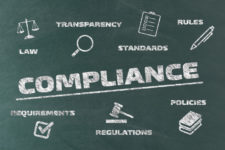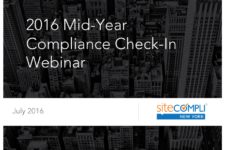“The best laid plans of mice and men often go awry,” – so we’re told, anyway. And while it’s true that day-to-day property management and operations can be entirely unpredictable, facing the waves of compliance changes unprepared is setting yourself up for disaster.
Where to start? From what we’ve seen in practice, the best laid compliance plans have three key elements (as a matter of fact, they happen to counter the three common property manager pitfalls). Communication, calendaring, and centralizing – the three C’s – will lay the basic foundation for a structured plan to attack any compliance challenges you may face.
Automated Communication
Your network extends beyond the walls of your building – making sure everyone is in the loop isn’t just best practice, it’s a necessity. Implementing a system that notifies team members of any changes, notes, documentation, and action items is key. The sooner your team knows about a complaint, a new violation, or an upcoming due date, the more likely they’ll be able to efficiently prioritize and handle the task at hand, reducing risk.
Of course, the more automated your communications system is, the more airtight your plan will be. Having a responsive network in place saves you time, letting your team prioritize larger initiatives instead of putting out fires.
A Core Calendar
One essential asset in an automated communications system is a team calendar. Whether you’re using Outlook, Google, or iCal, maintaining a common place for hearing and due dates is a must. Common calendars let team members see competing priorities, and better evaluate when and how operational tasks can fit in. And (of course), remembering when to wish your colleagues “Happy Birthday” is always a nice thing.
Centralized Document Storage
Picture it: an agency inspector arrives at your office looking for information. You know the answer is somewhere…in one of these rooms…in one of those filing cabinets. The last thing you want to be doing with an inspector on site is hunting down documents. Keeping a digital, centralized document storage repository lets you and your team members access information when you need it. Documents can be accessed at the literal click of a button instead of buried in a stack of paper.
While there are additional checks you can put in place to make sure you and your team are compliance combat-ready, taking these small but necessary steps to streamline information and make updates accessible will put you way ahead of the curve.
Want to hear how a team executes on their compliance plan? Check out how Urban American handles NYC compliance standards and surprises.




